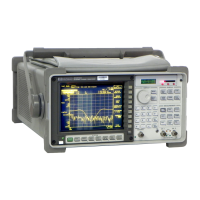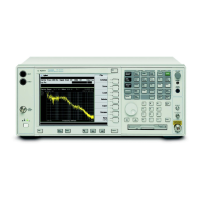If you want the frequency axis to be in radians, enter a scale frequency of
1/(2π). Then enter parameters for H(s) in terms of radians (even though the
unit keys still say mHz, kHz, and Hz). The frequency axis is always labeled
Hz (Hertz); however, the x-axis cursor should now be interpreted as radians.
Units are not displayed by frequency scale in the curve fit table because this is
a frequency scaling operation, and hence has units such as Hz/Hz, Hz/kHz, or
Hz/mHz.
• Specify the fit region (optional). You can specify a user span—a fit region that is
smaller than the measurement span. In full span, all measurement data from Trace A
is used in the curve fit. Sometimes, you may want to use only a portion of
measurement data. For example, you may want to exclude some resonances or regions
suspected of heavy distortion. In this case, you can specify a user span—a fit region
that is smaller than the measurement span. Smaller fit regions speed up the fitting
process.
• Add known poles and zeros to the curve fit table (optional). You can edit the curve
fit table to add known poles and zeros before you start the curve fit procedure. For
example, if your system contains an integrator, add a pole at 0 Hz. This term will be
fixed, with an “fxd” indication to the right of the term. Subsequent fits include fixed
terms in the model. The number of pole and zeros set in step 3 must be larger than the
order of fixed terms—this provides the degree of freedom in the fit.
• Enter any known delays. Any pure delay in a system affects the phase of the
frequency response without affecting its magnitude. If these delays are known, they
should be entered into the curve fit table before starting a curve fit. Pure delays cannot
be modeled with a finite-order rational polynomial in the s domain.
Agilent 35607A
Curve Fit Option 1D3 Operator's Guide
16-28

